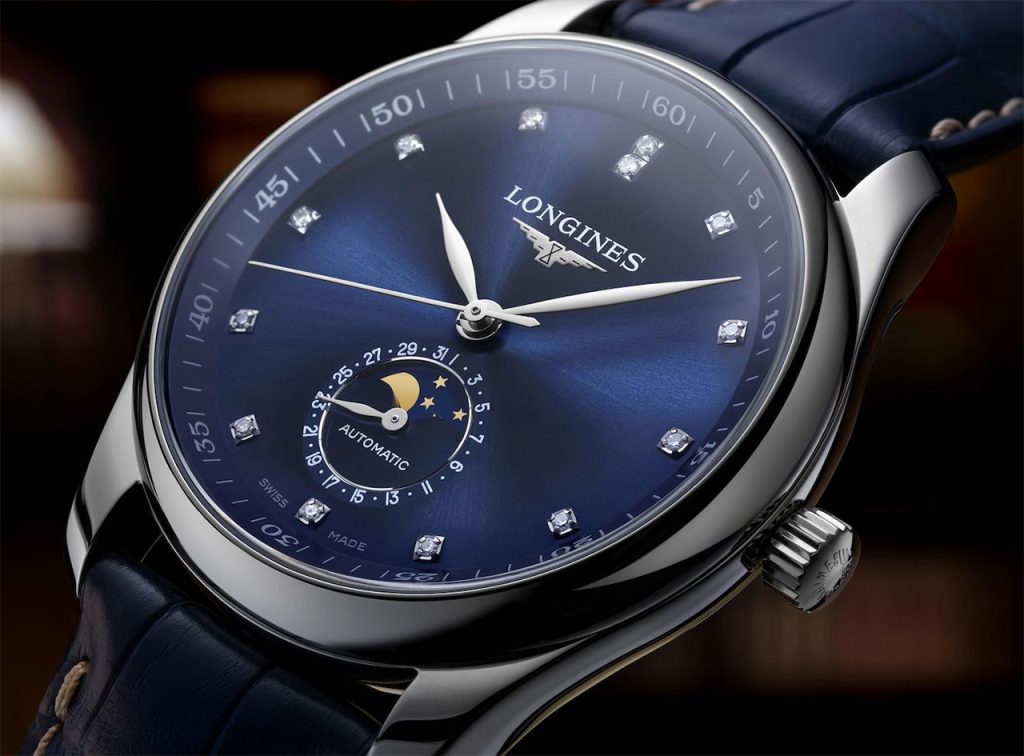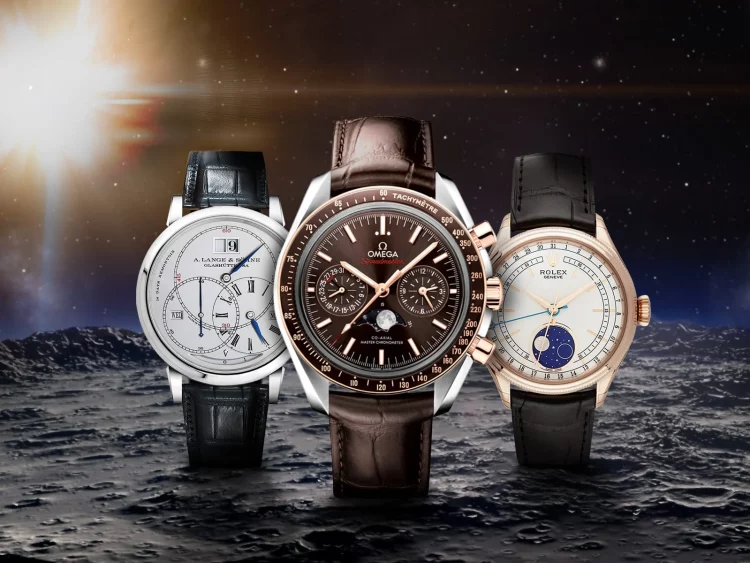The Allure of Moonphase in Watchmaking
The Astronomical Backdrop of Moonphase
Moonphase, within the functions of a wristwatch, is an astronomical feature with a delicate presence. While other astronomical complications often seem obscure and difficult to comprehend, with extremely high entry barriers, moonphase stands out as both beautiful and easily understandable. As the most classic and elementary astronomical function in wristwatches, it embodies humanity’s awe and understanding of astronomy and has become a significant element in the art of watchmaking. In the design of watch functions, many are closely related to the movement of celestial bodies. Among them, the moonphase function is the most accessible astronomical feature and serves as an introduction to the advanced astronomical domain. Although it may not be as complex as functions like the equation of time, sunrise – sunset, or sidereal time, it holds a unique place in the watch world due to its subtle and expressive nature. In ancient times, humans formulated calendars by observing the movements of celestial bodies, especially the sun and the moon. Modern calendars are mainly based on the position change of the Earth’s orbit around the sun, known as the solar calendar. Calendars based on the moon’s cycle, with each month corresponding to the time of the moon’s orbit around the Earth, without considering the length of the year, are called lunar calendars, which also hold great significance in human history. In simple terms, the moonphase function represents the real situation of the moon orbiting the Earth, a way to display the complex relationship among the sun, the Earth, and the moon. Through the display on an independent dial of a watch, people can admire the waxing and waning process of the moon within the small watch face.
The Basic Operational Principle of Moonphase
In the basic moonphase function, its display and operation are not overly complicated structures. It mainly relies on an additional gear to drive the moonphase disk, which usually has 59 teeth. The reason for this 59 – tooth design is that each synodic month is approximately 29.5 days (precisely 29.5306 days). To handle this non – integer time difference of 0.5 days, the traditional solution is to use a 59 – tooth gear, causing the moonphase disk to rotate once every two months. During the rotation of the moonphase disk, there are two moon images set at each end of the disk. As the moon on one side gradually disappears, the moon on the other side gradually appears. This design is not only simple and intuitive but also makes the moonphase display one of the most delightful features on the watch face. However, this 59 – tooth moonphase function has a certain margin of error, usually resulting in a one – day time difference every two and a half years. The moon’s ever – changing nature is not only in the natural world but also in watch design. The forms of moonphase are diverse, almost becoming an arena for watchmakers to showcase their aesthetic creativity. Different brands and watchmakers demonstrate their skills in the design of the moonphase function, making it not only a practical function but also a visual feast in watch design.

The Pursuit of Precise Moonphase
General moonphase displays are only roughly accurate in terms of precision. This is because the period from one new moon to the next (synodic month) is actually 29.53059 days, which, when converted to time units, is 29 days, 12 hours, 44 minutes, and 2.8 seconds. However, the classic 59 – tooth moonphase disk has only 29 days and 12 hours per synodic month, resulting in an error of approximately 44 minutes and 2.8 seconds compared to the real synodic month, causing the moonphase operation to gradually deviate from reality with an error of one day every two and a half years. For brands that pursue precision in watchmaking, this is an unacceptable error. Therefore, in recent years, more watch factories have added a series of small gear sets to the traditional moonphase display gear train, enabling it to be accurate for up to hundreds of years without the need for adjustment. Brands such as Patek Philippe, Hermès, Jaeger – LeCoultre, and Piaget have all launched moonphase watches with precise moonphase systems. Regarding solutions for improving accuracy, they are basically based on how to convert gear multiples. In Jaeger – LeCoultre’s Calibre 935 model movement, the moonphase can be accurate up to 972 years, and CHRISTIAAN VAN DER KLAAUW can even achieve an accuracy of over ten thousand years. The two powerhouses in the precision war are IWC and A. Lange & Söhne, which truly conform to the stereotype of Germans’ obsession with precision. A. Lange & Söhne launched the 1815 Moonphase watch in 1999, with an error of only one day every 1058 years, and a honey – gold version was re – launched only in 2010 to celebrate the 165th anniversary, making it quite rare. The latest Portuguese Perpetual Calendar watch from IWC, through a brand – new reduction gear system, has an accuracy of 45,361,055 years, an exaggerated number that has won the 公正性认证 of the Guinness World RecordsTM.
















































